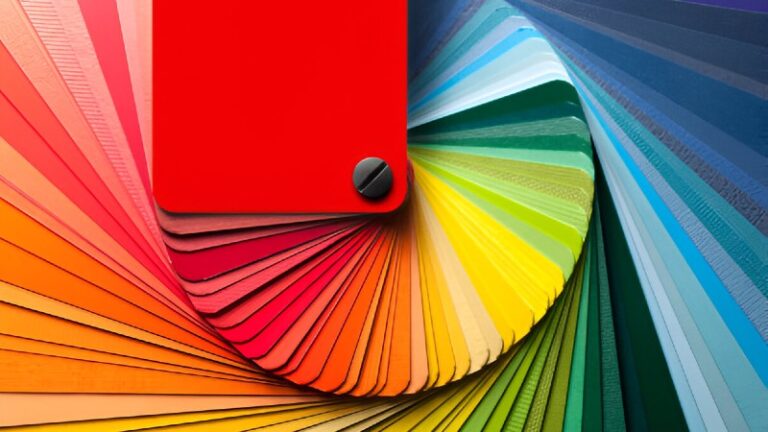Color is more than just a visual element—it’s a powerful tool that can shape emotions, influence perceptions, and even guide behavior. In art and design, understanding the psychology of color allows creators to communicate more effectively and leave lasting impressions on their audience.
Understanding Color Psychology
Color psychology examines how colors affect human thoughts, feelings, and actions. Its principles are used in various fields, from marketing to interior design, and are critical for artists and designers aiming to create meaningful, emotionally resonant work.
Color and Emotional Perception
Every color evokes a spectrum of emotions, influenced not only by personal experiences but also by cultural context and environmental cues. For example:
- Red: Evokes passion, energy, and urgency, but can also signify danger or aggression.
- Blue: Communicates trust, calm, and professionalism, yet darker blues may evoke sadness.
- Green: Associated with nature, growth, and health; darker greens can convey wealth or stability.
- Yellow: Bright and uplifting, linked to happiness and optimism, but excessive use may overwhelm viewers.
- Purple: Suggests luxury, mystery, and creativity, often balancing warm and cool emotional cues.
The Neuroscience of Color
Recent neuroscience research demonstrates that colors can trigger physiological responses. For instance:
| Color | Physiological Response | Example in Design |
|---|---|---|
| Red | Increases heart rate and arousal | Fast-food branding (e.g., Coca-Cola, McDonald’s) |
| Blue | Reduces stress, promotes calm | Corporate websites, social media platforms (e.g., Facebook, LinkedIn) |
| Green | Stimulates relaxation and focus | Environmental campaigns, health apps |
| Yellow | Boosts alertness and optimism | Call-to-action buttons in digital interfaces |
Color in Art
In visual arts, color is not merely decorative—it’s a vehicle for storytelling. Artists strategically manipulate hue, saturation, and brightness to evoke emotion and convey meaning.
Historical Perspectives
Throughout history, artists have understood the emotional power of color:
- Renaissance: Artists used deep blues and golds to convey divinity and prestige.
- Impressionism: Monet and Renoir explored light and color contrasts to evoke fleeting emotions and natural beauty.
- Modern and Abstract Art: Kandinsky studied the spiritual and psychological effects of color, linking specific hues to particular emotional states.
Color Context and Interaction
The perception of color is heavily influenced by surrounding colors. For instance, a gray object can appear warmer when placed next to blue and cooler when next to red. Designers and artists use this principle—called simultaneous contrast—to manipulate mood and focus within a composition.
Color in Design
In contemporary design, color choices are guided by both aesthetics and strategic goals. Understanding how users or viewers interact with color can enhance usability, brand recognition, and emotional engagement.
Digital Design and User Experience
UX and UI designers leverage color psychology to guide user behavior. Examples include:
- Google’s 41-shade blue experiment demonstrated how subtle differences in hue can significantly increase click-through rates on call-to-action buttons.
- Amazon uses orange for “Buy Now” buttons to create urgency and drive conversions.
- Healthcare apps often use blue and green to convey trust, calmness, and wellness.
Branding and Color Consistency
Colors can create lasting brand associations:
- Coca-Cola: Red evokes excitement and energy.
- Starbucks: Green symbolizes growth, sustainability, and freshness.
- Nike: Black and white communicate power, simplicity, and performance.
According to a HubSpot study, consistent brand colors can increase brand recognition by up to 80%, highlighting the strategic importance of color in design.
Contextual and Cultural Influences
While traditional color psychology focuses on individual hues and their universal emotional effects, emerging research highlights the importance of context and culture in shaping color perception.
Cultural Differences
- In Western cultures, white is often associated with purity and weddings, whereas in some East Asian cultures, it symbolizes mourning and funerals.
- Red is lucky in China, symbolizing prosperity and celebration, but can evoke danger in Western contexts.
- Colors can carry historical or religious significance that modifies emotional responses.
Environmental and Situational Context
The environment in which a color is perceived also impacts its effect:
- A bright yellow wall may energize a workspace but overwhelm a bedroom.
- Digital screens can alter perceived brightness and hue, affecting readability and emotional tone.
- Lighting conditions can shift color perception, influencing mood and attention.
Applying Color Psychology Strategically
To maximize the impact of color in art and design, consider a systematic approach:
- Define the emotional goal: Identify the feeling or behavior you want to evoke.
- Choose primary colors strategically: Use hues that align with the intended emotional response.
- Leverage color harmony: Apply complementary, analogous, or triadic schemes to guide visual flow and cohesion.
- Test and iterate: Conduct A/B testing, gather audience feedback, and assess accessibility.
- Adapt for context: Consider cultural, environmental, and situational factors that influence perception.
Color Accessibility and Inclusivity
Designers must ensure that color choices are inclusive:
- Use high-contrast combinations to support readability for visually impaired users.
- Consider color-blind safe palettes; approximately 8% of men and 0.5% of women have some form of color vision deficiency.
- Use redundant cues (text, patterns) alongside color to convey information.
Innovative Uses of Color
Artistic Example
Rothko’s large color field paintings use vibrant hues to evoke profound emotional responses. By manipulating saturation, contrast, and scale, Rothko allows viewers to experience color as a psychological and spiritual medium.
Design Example
Spotify uses contrasting greens and blacks to create a sense of modernity and energy. Interactive elements change shades on hover, subtly guiding user attention without overwhelming the interface.
Key Takeaways
- Color psychology bridges art, science, and human behavior.
- Individual hues evoke emotional and physiological responses, but context and culture can modify these effects.
- Strategic use of color in design improves usability, brand recognition, and audience engagement.
- Accessibility considerations ensure color choices are inclusive and effective for all viewers.
- Testing, iteration, and cultural awareness are crucial for maximizing the impact of color in art and design.
Conclusion
Color is a universal yet deeply personal language, capable of communicating emotion, guiding perception, and shaping experiences. Beyond traditional color psychology, modern research underscores the role of context, culture, and neuroscience in understanding how color truly influences human behavior.
By integrating these insights, artists and designers can create work that resonates on multiple levels: aesthetically, emotionally, and strategically. Whether in fine art, branding, digital interfaces, or public spaces, color remains an essential tool for shaping perception and leaving a lasting impression.
Frequently Asked Questions (FAQs)
Color psychology studies how colors influence human emotions, behavior, and perception. In art and design, it is used to evoke specific feelings, guide audience attention, and enhance engagement.
How do different colors affect emotions?
Colors have typical emotional associations: red evokes passion and energy, blue promotes calm and trust, green symbolizes growth and nature, yellow increases positivity, and purple conveys luxury and creativity. Context and culture can modify these effects.
Why is color important in branding and digital design?
Consistent use of color in branding builds recognition and emotional connection. In digital design, colors guide user behavior, enhance usability, and improve conversions, such as highlighting call-to-action buttons or interactive elements.
How can designers ensure color accessibility?
Designers should use high-contrast color combinations, color-blind safe palettes, and redundant cues like patterns or text labels to ensure inclusivity for users with visual impairments or color vision deficiencies.
Can cultural differences affect color perception?
Yes. Colors have different meanings across cultures. For example, white may signify purity in Western cultures but mourning in East Asian cultures. Designers should consider cultural context when choosing colors for global audiences.


